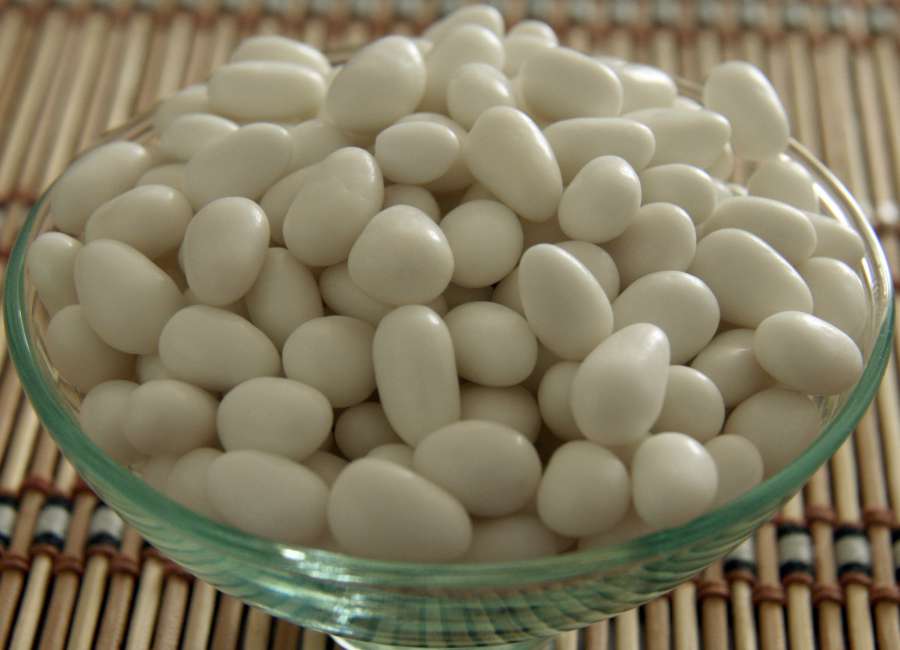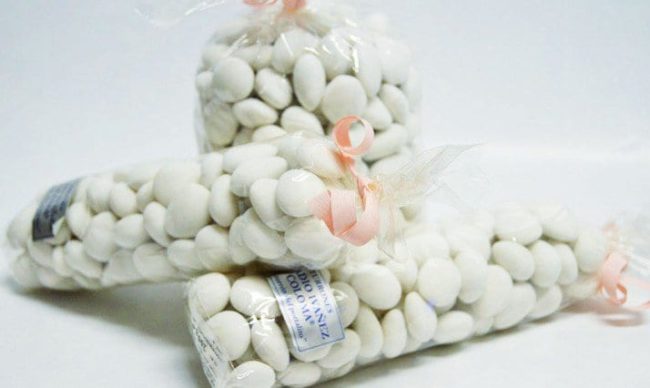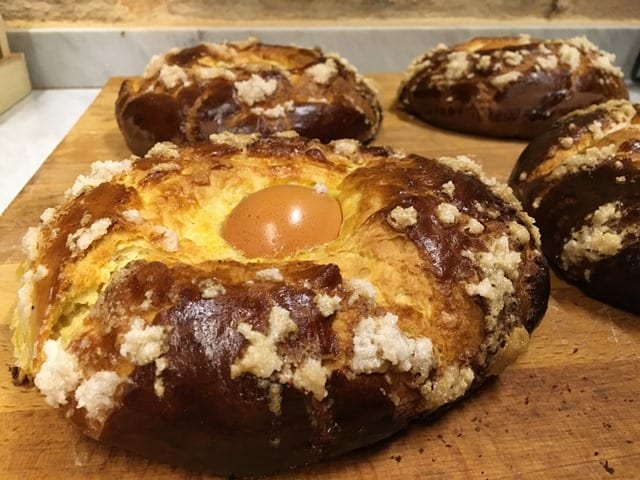All the dumplings, unfortunately, every day they see less. Now that we are on such important dates as the Christmas we would like to honor this sweet. Essential a few decades ago in family dinners, each year it becomes more infrequent. That is why we will review its history and the possible causes of its decline. Get ready because nostalgia is about to invade you.
But what are they?
The concept is very simple. Is about almonds covered by several layers of sugar through a process of confit, which gives them a very white. They draw attention for their texture crunchy and its flavor sweet. In addition, it is a curious food because it used to be seen only in big family events. Several examples of these can be New Year's Eve dinners, communions, weddings ... Nobody bought sugars before meeting with friends. Less to eat them at home without company. They were more like a small gift for those invited to those appointments, minimalist but with a certain gourmet value.

The origin of the dragees
Although these became popular in Spain at the end of the sXNUMXth century, they already existed before. It is known that its germ lies in the old Roma, where they were covered with miel nuts. We are talking about very precious delicacies. In the Middle Agesinstead, they began to mix sugar and honey. It was a court delicatessen made by apothecaries, the precedent for pharmacists.
In Spain they began to prepare in the XV century under the name of "almond sprinkles ». However, they begin to take the shape we know in the next century. They went from being rough as the praline to be smooth and polished. At that time they sweep in France e Italy hand in hand with the houses Braquier y bequino. However, they would not be manufactured industrially until the XNUMXth century. In this the "Turbine à dragée", a steam drum capable of producing tons of them.
Is the industrial Revolution the one that allows their arrival in Spain. In 1886 its industrial boom begins since before they were only made by artisans. The new industry chose precisely a place where almonds are sweetened on the occasion of the holidays: Valencia. It is in the aforementioned year when the first factory opens in the Valencian town of Casinos. The marriage of Manuel Jarrin y Carmen murgui they were the ones who gave life to the project. The first one learned the traditional preparation of dumplings from an elderly craftsman. Later he inherited all the utensils for the industry from his wealthy father-in-law.

Where are you now?
Many will associate with nostalgia your taste with the presence of your loved ones. Possibly some of them are no longer here. Despite all the dumplings they have not completely disappeared. Its sales, very weak, have two strong seasons. One goes from September a December, as they are typical Christmas. The other is the spring: time of weddings, baptisms and communions.
The dark part is the tragic slope of this delicious food, which is undeniable. They are seen less and less because of our great family gatherings. Nor are they dropped as much on the shelves of large surfaces as before. Obviously the economic crisis. This forced many families to dispense with the dumplingsWell, it is not exactly the cheapest sweet. They had to opt for other options economic.

There are those who also consider the possibility that the decrease in their consumption comes from the rise of healthy eating. The proportion of consumers who read the labels of the products they buy is growing more and more. Perhaps this factor may have something to do with it, since the sugar is in the spotlight. Our society consumes too much and this is a reality. From his abuse derives the increase in cases of diabetes, childhood obesity, liver disorders ... In addition, it creates addiction, which aggravates its consequences.
Peladillas in gypsy culture
Curiously, one area where a decrease is not yet appreciated is in the gypsy culture. It is typical for the bride and groom's families to buy good amounts of dragees to throw to the newlyweds as if it were rice. Obviously, when buying very large quantities, the quality of these drops. However, they are highly valued as a symbol of purity and virginity for its color, white like that of the dress. They are also present in other events such as requests and the ritual of checking the virginity of the bride.
What has decreased is the number of gypsy weddings due to the high cost of the ceremony. At least these still preserve a ritual component. Hopefully there are efforts by the market to relaunch this product again. There is plenty of talent in this country to find solutions. Maybe these go through manufacturing them with stevia instead of sugar or finding some way to lower its glucose content. A marketing suitable could make us evoke the warmth of home. What is clear is that they are (or were) part of our religious and Christmas culture.






